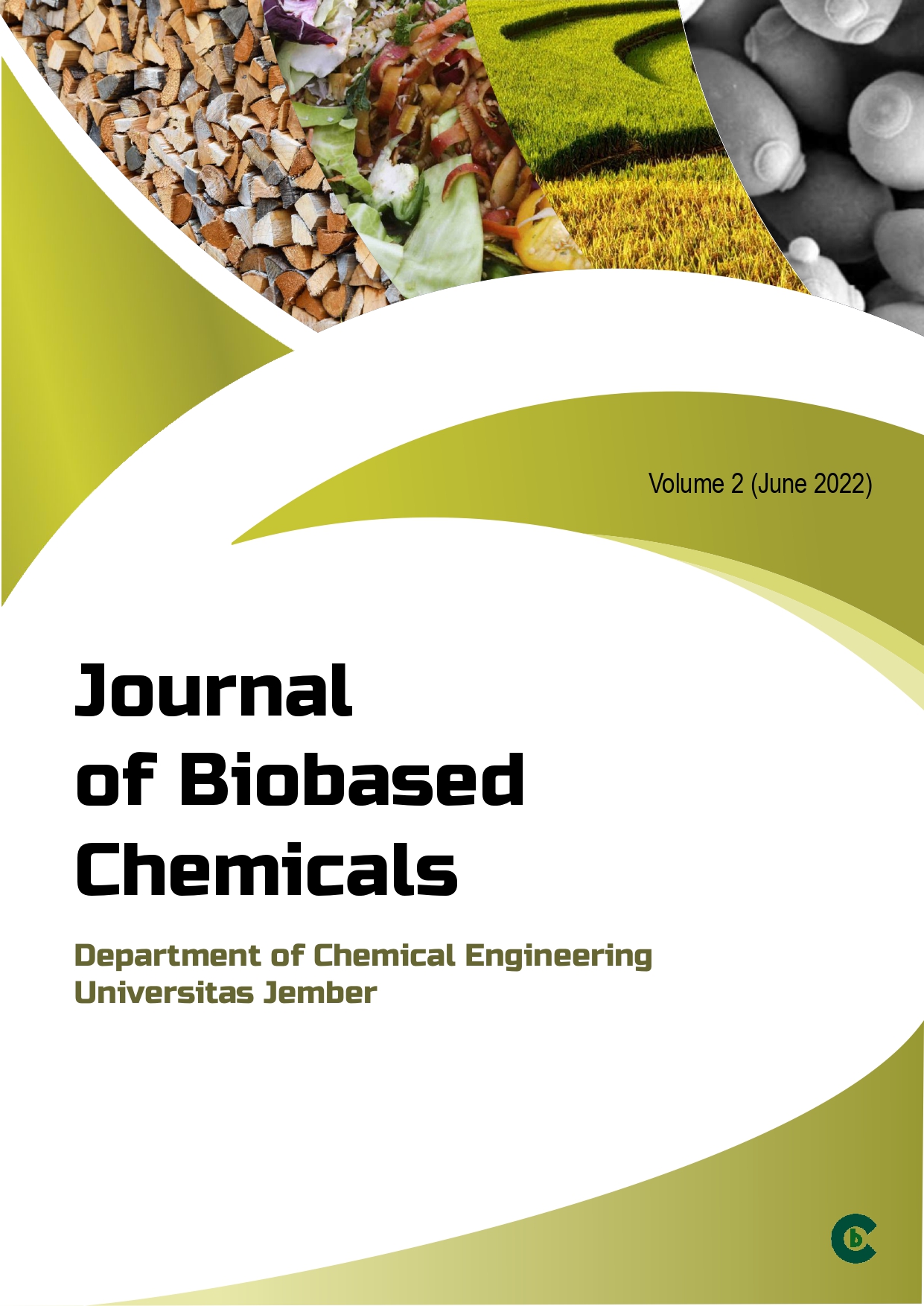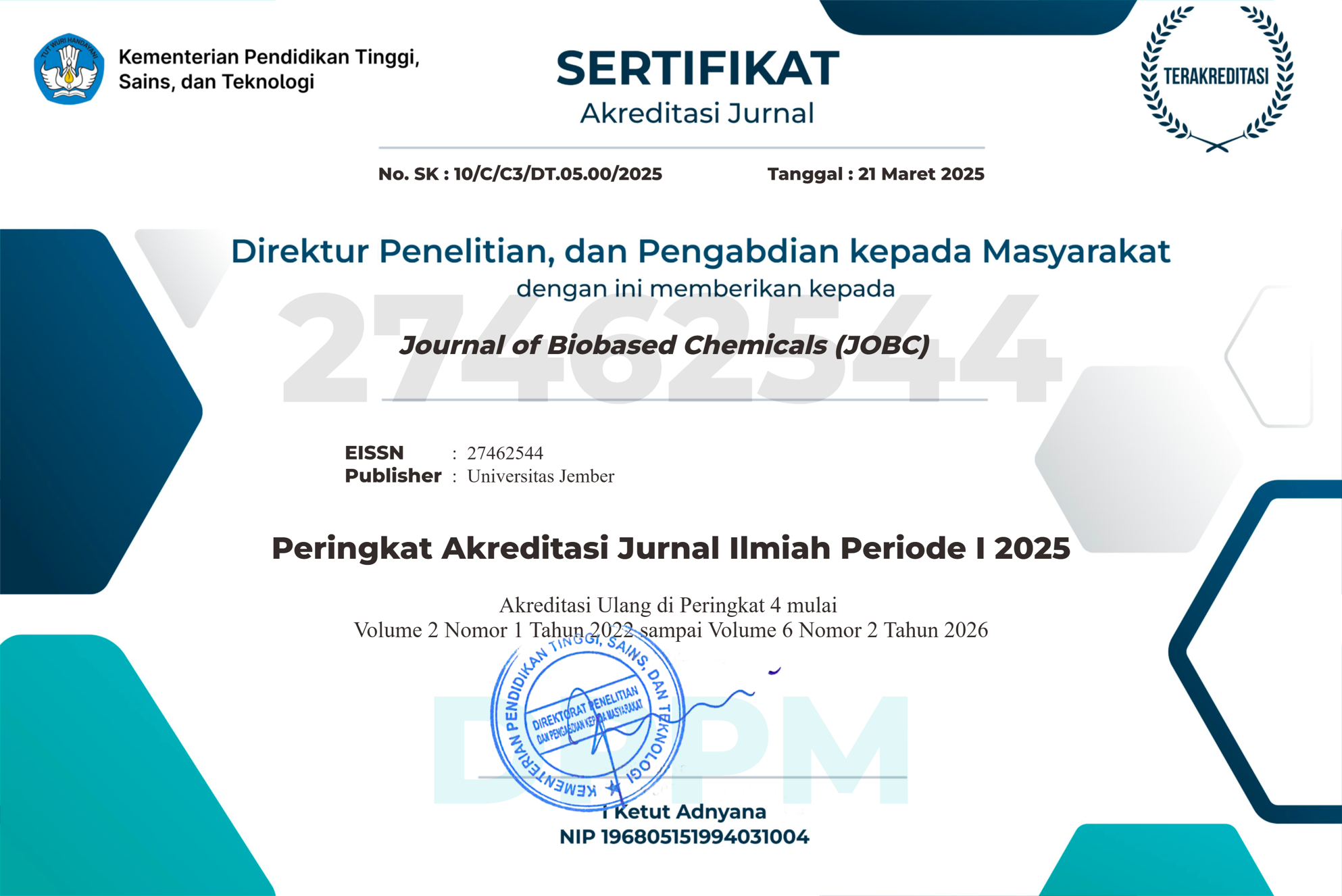Comparison of Pegagan (Centella asiatica (L.)) Extraction with Ultrasound-Assisted Extraction and Microwave-Assisted Extraction Methods Using Response Surface Methodology
DOI:
https://doi.org/10.19184/jobc.v2i1.117Keywords:
Ultrasound-Assisted Extraction, Microwave-Assisted Extraction, Centella asiatica (L.), Phenolic Test.Abstract
Pegagan (Centella asiatica (L.)) is one of the herbaceous plants that grow, and flowers throughout the year. Pegagan has been used for hundreds of years, especially in the dermatology, and cosmetology industries. Pegagan (Centella asiatica (L.)) has distinctive bioactive components, namely triterpene ester glycoside compounds in the form of asiaticoside, and madecoside as well as triterpene group compounds in the form of asiatic acid, and madecasic acid. There are various extraction methods to produce the following compounds namely, conventional extraction methods, and modern extraction methods. The two methods have differences in the results obtained. Therefore, the difference in the extraction method will determine the result of the difference in the levels of a compound. So that this research was carried out on the effect of Pegagan (Centella asiatica (L.)) extraction using a comparison of the Microwave-Assisted Extraction (MAE), and Ultrasound-Assisted Extraction (UAE) methods on the total phenol content in the Pegagan (Centella asiatica (L.)) extracted. Analysis of the extracteded bioactive content was carried out by analyzing the total phenol content using the Folin-Ciocalteau reagent method and analyzing the data through the Analysis of Response Surface Design expert 11 to see the significance of the research variables. The results obtained from the study are in the form of a comparison of the optimal conditions for the total phenol content, namely, the comparison between the UAE, and MAE methods for Centella asiatica (L.). extracted with ethanol solvent which is more optimal by using the MAE method because in a short time it can produce 1130.7882 mg.








